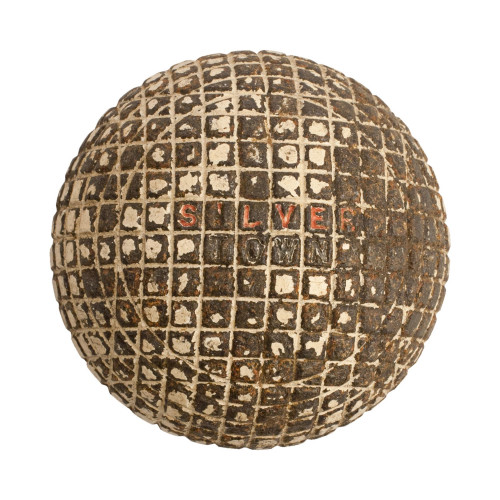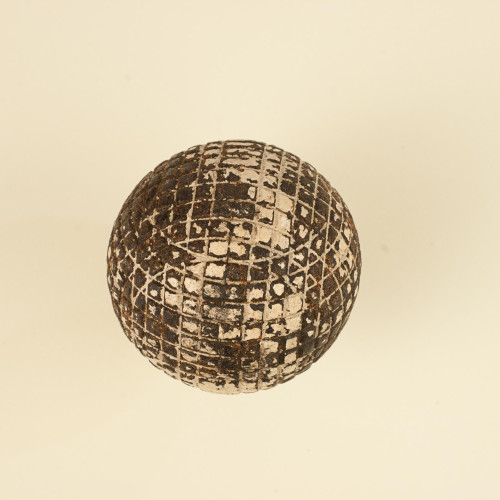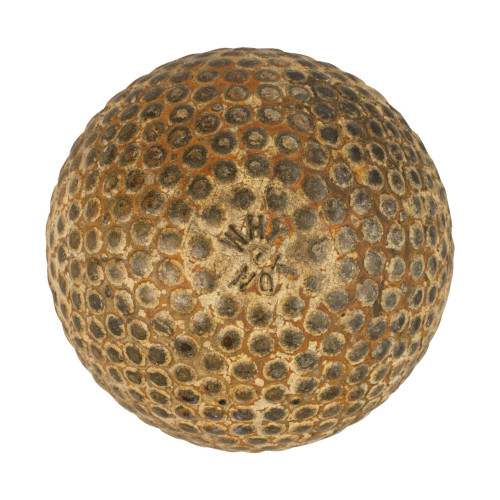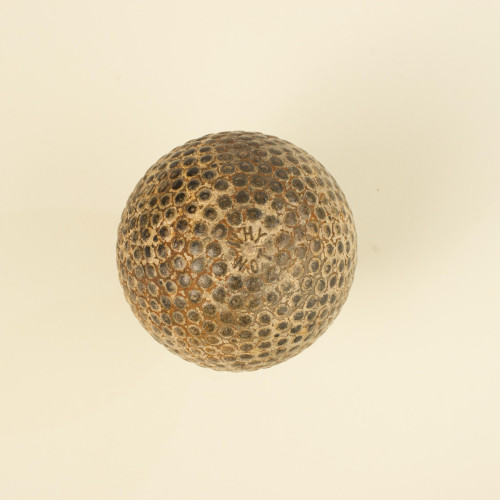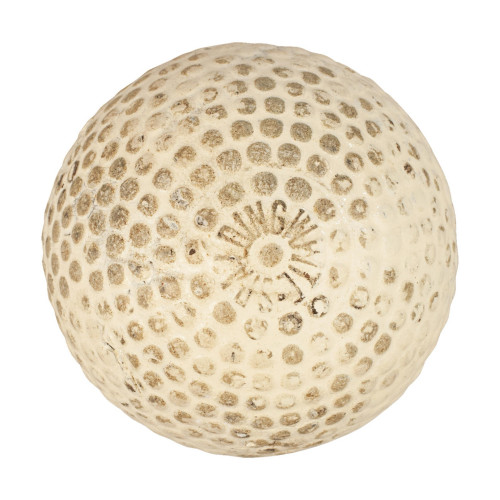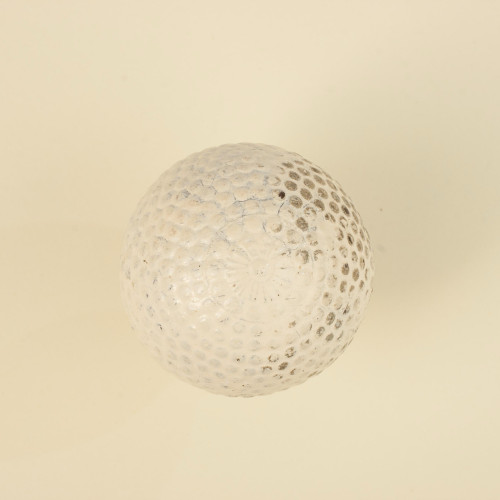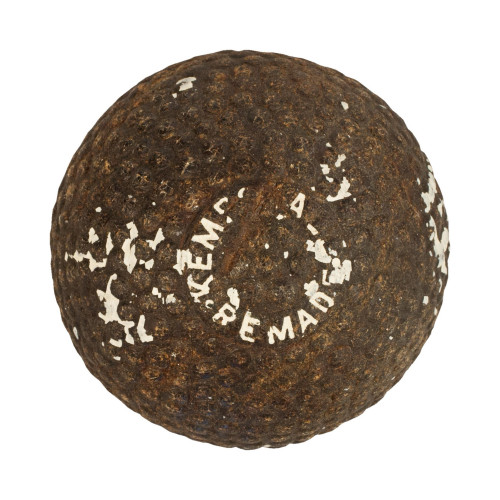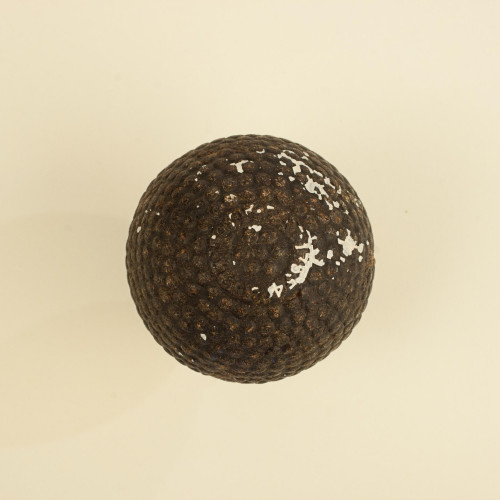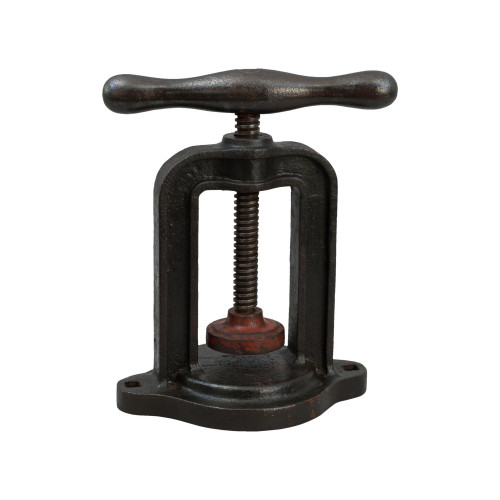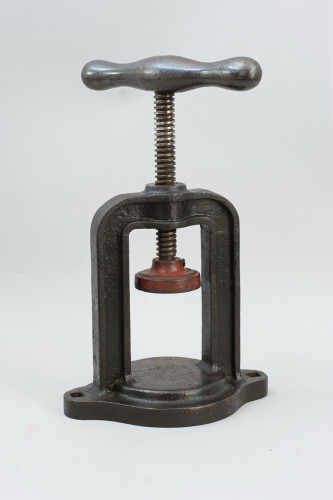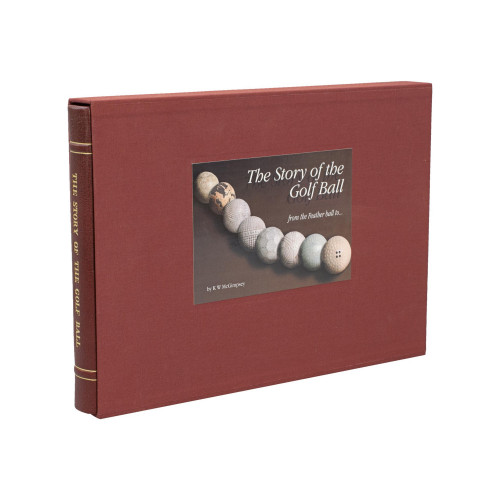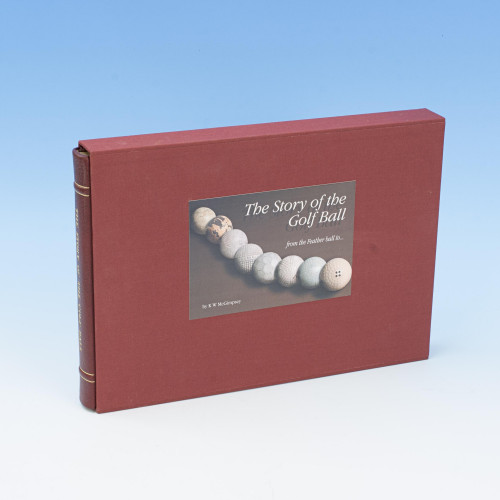- Home
- Golf
- Balls & Bags
- Golf Ball, Bramble Pattern, The Colonel
Golf Ball, Bramble Pattern, The Colonel
Golf Ball, Bramble Pattern, The Colonel
27298
Bramble Pattern Golf Ball, The Colonel.
A good example of a bramble patterned rubber core golf ball. The golf ball is in good condition and is manufactured by St. Mungo Manufacturing Co. The ball is marked 'The Colonel' on one pole, 'Patent No. 2164006' on the other and is with the classic bramble pattern, raised dimples.
The ball is approximately 1 11/16 inch in diameter (4.3 cm).
The golf ball is manufactured by St. Mungo Manufacturing Co. of America, Newark, New Jersey and Glasgow, Scotland. St. Mungo was one of the first licensees of the Haskell patent rubber core ball in the UK. Prior to the 1920's as there were no regulations in place, the golf ball was made in varying combinations of sizes and weight. With this large variety of balls a player was able to choose a ball depending on the wind conditions, temperature and the course choice of the day. St. Mungo offered a complete line of Colonel golf balls for this purpose. Some of the large lightweight balls would actually float on water giving them the nickname 'floaters'. In 1935 St. Mungo were making 32 different models of ball.
The rubber core ball (the ancestor of the modern ball) began its life in the late 1890's. The first mass produced rubber core ball was by Coburn Haskell of Cleveland, Ohio. The first core balls were hand wound with elastic thread with a Gutta-percha cover, moulded with the raised square mesh pattern of their predecessor. The slight irregularities in the early wound balls made them quite lively, it was not until the invention of the automatic winding machine by John Gammeter (an engineer at Goodrich) and the change of pattern from mesh to bramble that the balls became more consistent and predictable. In later years, the 1920's, the design went back to a mesh pattern with lattice design.
Dimensions:
1900-1949
1905
United Kingdom
The Colonel
Original condition, surface marks.
Thank you for your enquiry.
We will get back to you soon.
Please create wishlist to add this item to
RELATED ITEMS








